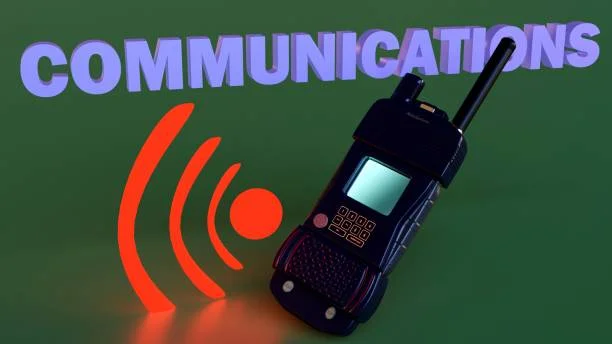Introduction to Two-Way Radio Over the Internet
Reliable, instant communication systems are vital for organizations managing operations across vast spaces or complex environments. Two-way radios have filled this role for decades, providing secure, real-time exchanges for first responders, transportation teams, and event staff. Today, advancements in networking have led to a technological leap: connecting traditional radios via the internet—or through 2 way radio over WiFi—often called Radio over IP (RoIP). This allows standard radio devices to communicate seamlessly across any distance, even globally, using the web as a transmission backbone.
Modern RoIP systems aren’t limited to radio handsets. Thanks to digital transformation, users can now connect radios, smartphones, tablets, and computers in one platform, blending radio reliability with digital accessibility.
Organizations exploring new communication strategies often discover that RoIP brings technical benefits and operational and budgetary advantages—like reducing reliance on expensive towers and making global communication feasible. Beyond reach and cost, these solutions bolster communication security and can be deployed in a matter of days with the right planning.
Understanding RoIP Technology
RoIP is built on the same principles as Voice over Internet Protocol (VoIP). Analog or digital voice data from a radio device is converted into digital packets, transmitted via IP networks (including the internet), and then reassembled at the receiver’s end, where it is played back as audio. This mechanism sidesteps the line-of-sight limitations and range constraints typical of standard radio transmissions.
By leveraging the internet, RoIP allows an operator in New York to communicate instantly with another in Los Angeles—or even on a different continent—without special infrastructure or repeaters along the route. It also enables integration between disparate communication devices, making coordinating mixed teams equipped with radios, smartphones, and computers possible.
Don’t skip this related post — it bridges gaps you didn’t know existed.
Key Benefits of RoIP
Extended Range: Radio signals are no longer restricted by traditional barriers, such as terrain, distance, or power output. With RoIP, your “radio network” can span countries or even continents if both endpoints are connected to the internet. Integrating the PACE methodology ensures that communication remains reliable, providing structured fallback options if the primary channel fails.
- Cost Efficiency: By removing the need for expensive towers or leased lines, RoIP lowers upfront and ongoing communication costs.
- Interoperability: RoIP connects various platforms and device types, supporting seamless communication between teams and organizations—crucial during mutual aid incidents or joint operation scenarios. Major industry leaders note that the real power of RoIP lies in enabling fluid communications and rapid response during emergencies—a critical factor highlighted by Forbes Technology Council as radio systems become integrated with advanced, secure digital solutions.
Applications Across Industries
- Public Safety: Police, fire, and EMS can coordinate beyond county or state lines, centralizing their response and improving situational awareness for all agencies involved.
- Transportation: Trucking, shipping, and airline operators use RoIP to link field staff and control centers in real-time, even across countries or oceans.
- Event Management: Staff at sporting events, concerts, or large conventions bridge on-site radios to remote off-site coordinators, covering venues and logistical operations simultaneously.
The scalability and remote management capabilities make RoIP suitable for municipalities, utilities, and private enterprises handling sensitive operations or supporting teams in field deployments.
Setting Up a RoIP System
- Assess Communication Needs: Identify who needs to connect, required features, coverage areas, and failover requirements.
- Select Compatible Equipment: Choose devices and infrastructure (gateways, adapters, software) that support your desired features and scale.
- Establish Network Infrastructure: Ensure you have sufficient internet connectivity (wired or wireless), with redundancy for mission-critical use.
- Configure Software: Deploy RoIP software or services to manage voice packet routing, access privileges, and security controls.
- Train Users: Offer hands-on training and simple documentation to quickly get teams up to speed, reducing resistance to change and maximizing effectiveness.
Network reliability is paramount. Organizations should plan for failover options and monitor their systems for bottlenecks, especially where minute-by-minute communications are vital. Wired magazine echoes the importance of resilience and redundancy in recent coverage of communication system failures during natural disasters.
Challenges and Considerations
- Network Dependence: Because RoIP relies on internet connectivity, interruptions—whether due to outages or poor signal—can erode communications. Backup links or satellite internet may be required for remote areas.
- Security Concerns: With any IP-based technology, RoIP implementations must address cybersecurity. Strong encryption, firewalls, and access controls help protect sensitive or regulated transmissions.
- Initial Setup Costs: Migrating from conventional radio systems requires investments in new hardware, software, training, and sometimes network upgrades. However, these usually pay off as agencies gain flexibility and reduced long-term costs.
Assess your specific risks and invest in robust support frameworks—many organizations use hybrid models until RoIP maturity and reliability reach target levels.
Future of RoIP
The future of two-way radio over internet technology is set for continued evolution. Emerging initiatives, like the SONIC project linking FM radio and SMS messaging in unconnected regions, show RoIP’s flexibility for bridging digital divides and supporting resilience in extreme or developing environments.
Integrating artificial intelligence, automation, and advanced network management promises to unlock even more powerful, proactive capabilities for organizations worldwide.
Final Thoughts
Radio over Internet Protocol represents one of the most significant leaps in operational communications since the invention of the radio itself. Its unmistakable blend of reliability, range, cost savings, and flexibility enables industries to prepare for everything from massive events to large-scale disasters or daily operations. Strategic planning, user training, and a focus on security and redundancy are critical to harnessing its full potential and ensuring your teams are connected when it matters most.
Keep your curiosity alive — explore more topics that move minds and markets.







